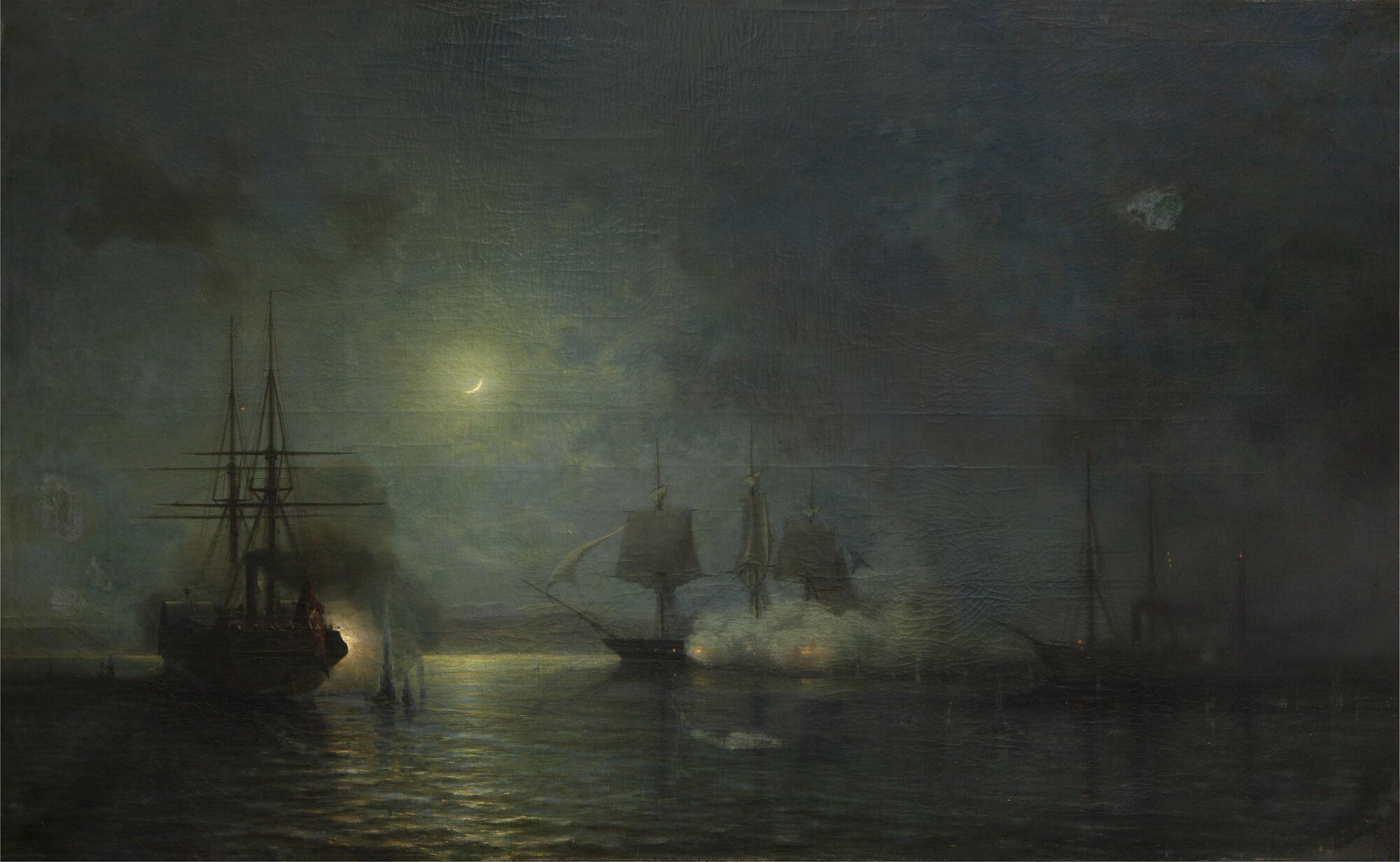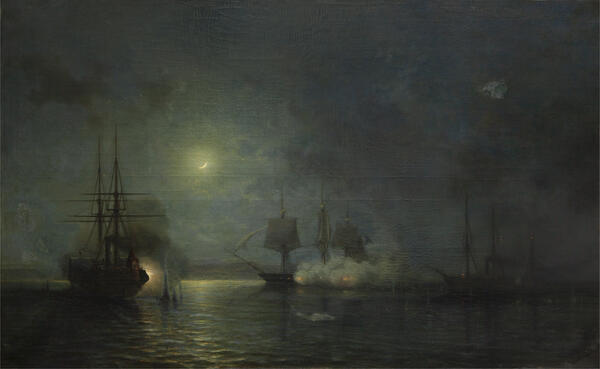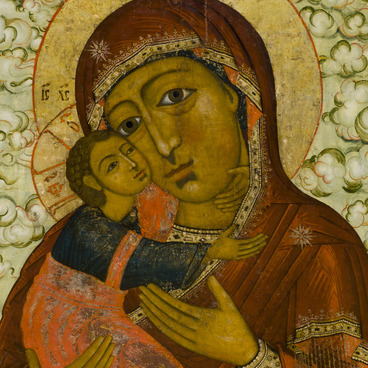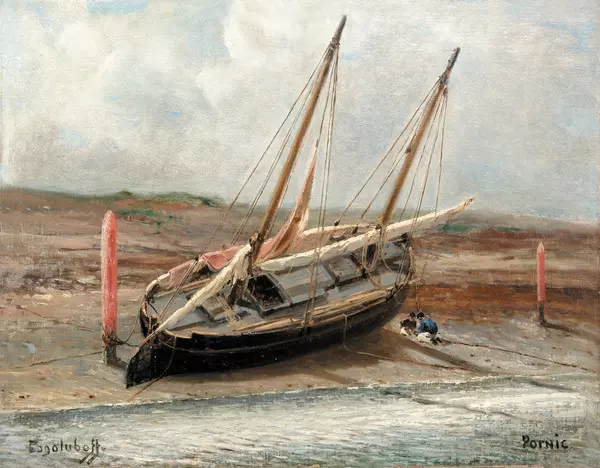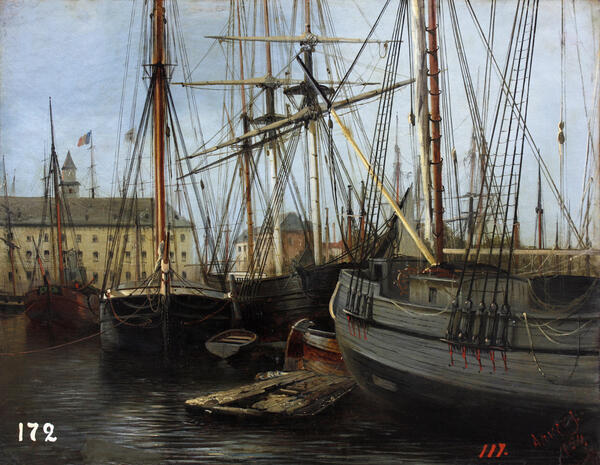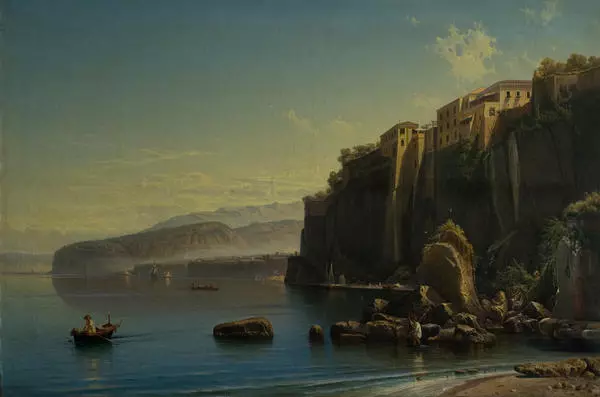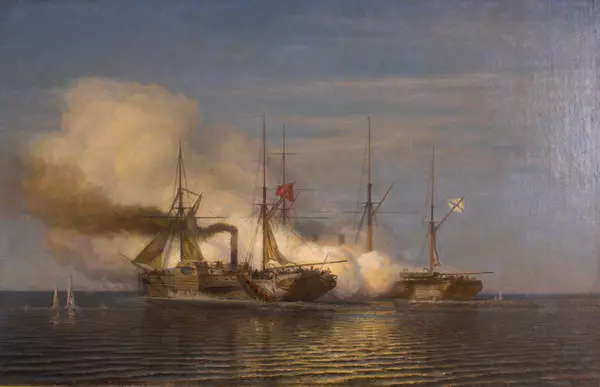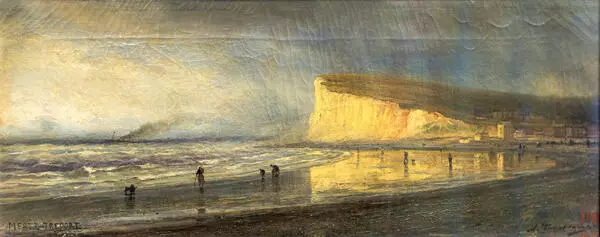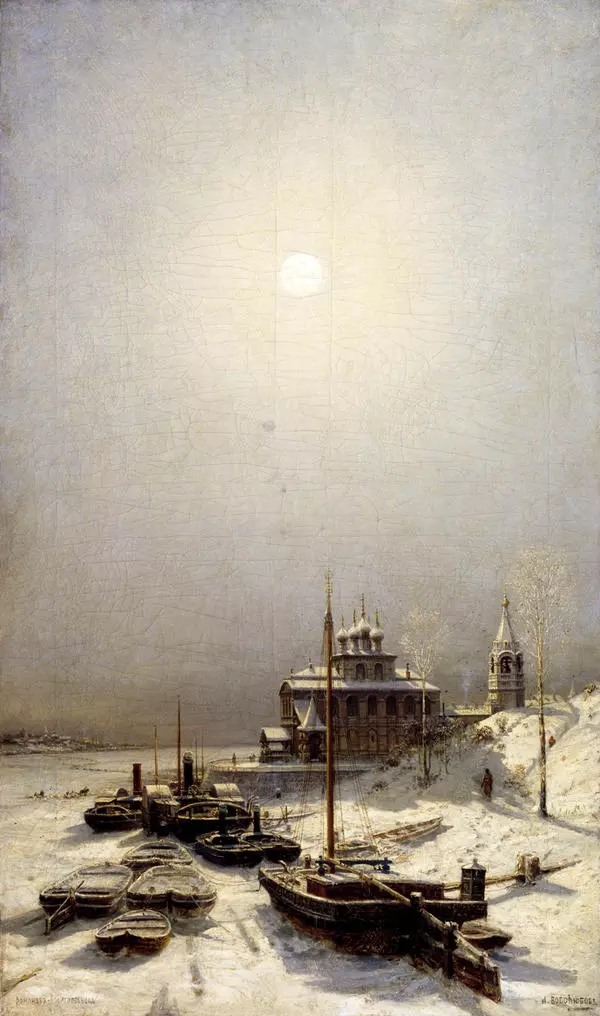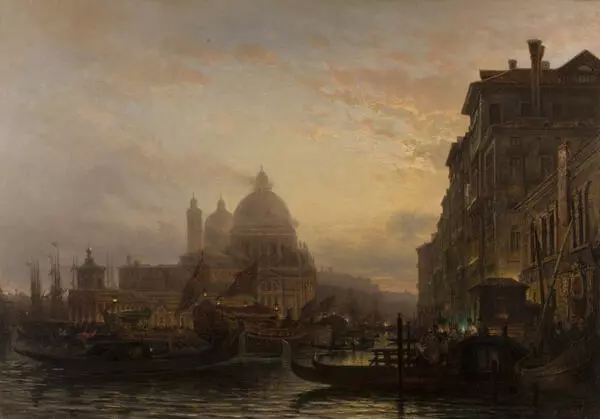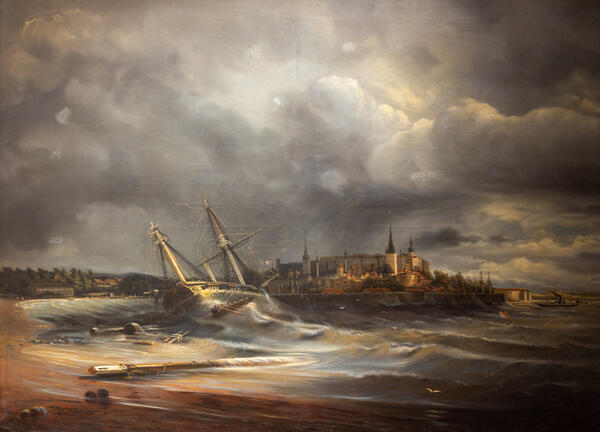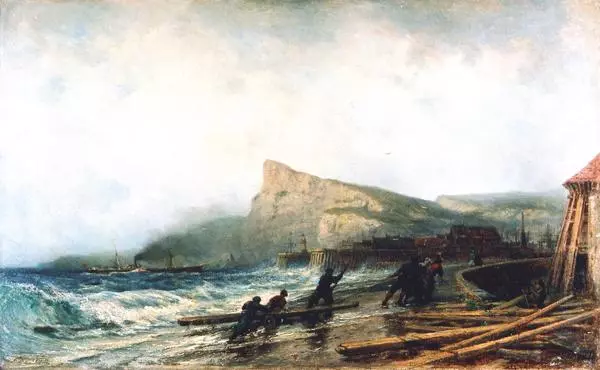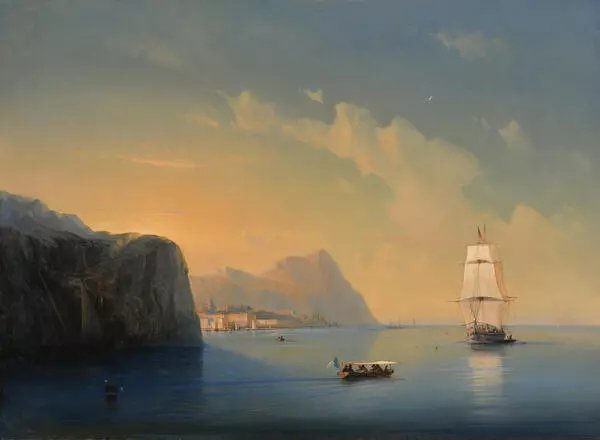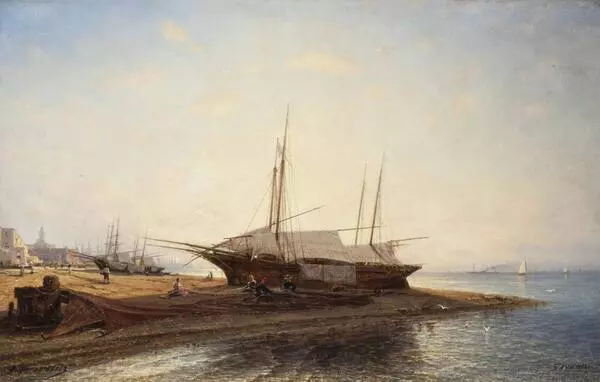In 1860, Alexey Bogolyubov, the Main Naval Staff artist, held his first solo exhibition in St. Petersburg. ‘Imagine what a great fellow this Bogolyubov is. His success is extraordinary. Everyone is crying out loud that he has surpassed Aivazovsky…, ” wrote a contemporary of the artist. “The Battle of Frigate “Flora” was among the artist’s works displayed at the exhibition.
Born in Novgorod Governorate, Alexey Bogolyubov came from the family of a colonel, who once participated in the Patriotic War of 1812. His grandfather was Alexander Radishchev, the author of ‘Journey from St. Petersburg to Moscow’. It is no coincidence that Bogolyubov chose seascape painting as his main genre. He was still a young boy when he was sent to the Aleхandrovsky Cadet Corps for minors. Later on, the future seascape painter transferred to the Naval Cadet Corps, began serving in the Baltic Fleet, and received the rank of midshipman in 1841.
While still studying at the Cadet Corps, Bogolyubov became remarkably good at painting. In 1849, Maximilian de Beauharnais, Duke of Leuchtenberg, who got acquainted with the officer’s drawings during a cruise aboard the “Kamchatka” ship, advised the young man to devote himself to art. In 1850, Bogolyubov entered the Academy of Arts with the permission of Emperor Nicholas I, who took a keen personal interest in the painter’s career.
In 1853, the emperor commissioned his favorite artist to create seven paintings illustrating the victories of the Russian fleet to mark the success at the start of the Crimean War with the Turks. The painting housed in the museum belonged to this series. The artwork depicts the legendary battle that took place in 1853 at Cape Pitsunda. The frigate ‘Flora’, fighting under the command of a young captain-lieutenant Anton Skorobogatov, was attacked by three steam frigates of the admiral Mustafa Pasha. The battle lasted the whole night. The Russian ship seemed to have no chance: in calm weather, it was impossible for the captain without any combat experience to oppose the three perfectly equipped warships. However, luck was on the side of the Russian Empire. Skorobogatov’s valor and composure, as well as the enemy’s lack of coordination enabled ‘Flora’ to keep all the crew and get only two holes, while the Turkish flagship was towed away. The brilliant victory of Skorobogatov and his crew became part of the heroic history of the Russian fleet.
‘The Battle of Frigate “Flora” is a romantic battle seascape. Contemporaries defined the picture as one of the best Russian paintings in a hundred years. It is still unknown where and when Vladimir Sukachev, the founder of the Irkutsk Art Museum, acquired this painting for his collection.
Born in Novgorod Governorate, Alexey Bogolyubov came from the family of a colonel, who once participated in the Patriotic War of 1812. His grandfather was Alexander Radishchev, the author of ‘Journey from St. Petersburg to Moscow’. It is no coincidence that Bogolyubov chose seascape painting as his main genre. He was still a young boy when he was sent to the Aleхandrovsky Cadet Corps for minors. Later on, the future seascape painter transferred to the Naval Cadet Corps, began serving in the Baltic Fleet, and received the rank of midshipman in 1841.
While still studying at the Cadet Corps, Bogolyubov became remarkably good at painting. In 1849, Maximilian de Beauharnais, Duke of Leuchtenberg, who got acquainted with the officer’s drawings during a cruise aboard the “Kamchatka” ship, advised the young man to devote himself to art. In 1850, Bogolyubov entered the Academy of Arts with the permission of Emperor Nicholas I, who took a keen personal interest in the painter’s career.
In 1853, the emperor commissioned his favorite artist to create seven paintings illustrating the victories of the Russian fleet to mark the success at the start of the Crimean War with the Turks. The painting housed in the museum belonged to this series. The artwork depicts the legendary battle that took place in 1853 at Cape Pitsunda. The frigate ‘Flora’, fighting under the command of a young captain-lieutenant Anton Skorobogatov, was attacked by three steam frigates of the admiral Mustafa Pasha. The battle lasted the whole night. The Russian ship seemed to have no chance: in calm weather, it was impossible for the captain without any combat experience to oppose the three perfectly equipped warships. However, luck was on the side of the Russian Empire. Skorobogatov’s valor and composure, as well as the enemy’s lack of coordination enabled ‘Flora’ to keep all the crew and get only two holes, while the Turkish flagship was towed away. The brilliant victory of Skorobogatov and his crew became part of the heroic history of the Russian fleet.
‘The Battle of Frigate “Flora” is a romantic battle seascape. Contemporaries defined the picture as one of the best Russian paintings in a hundred years. It is still unknown where and when Vladimir Sukachev, the founder of the Irkutsk Art Museum, acquired this painting for his collection.
